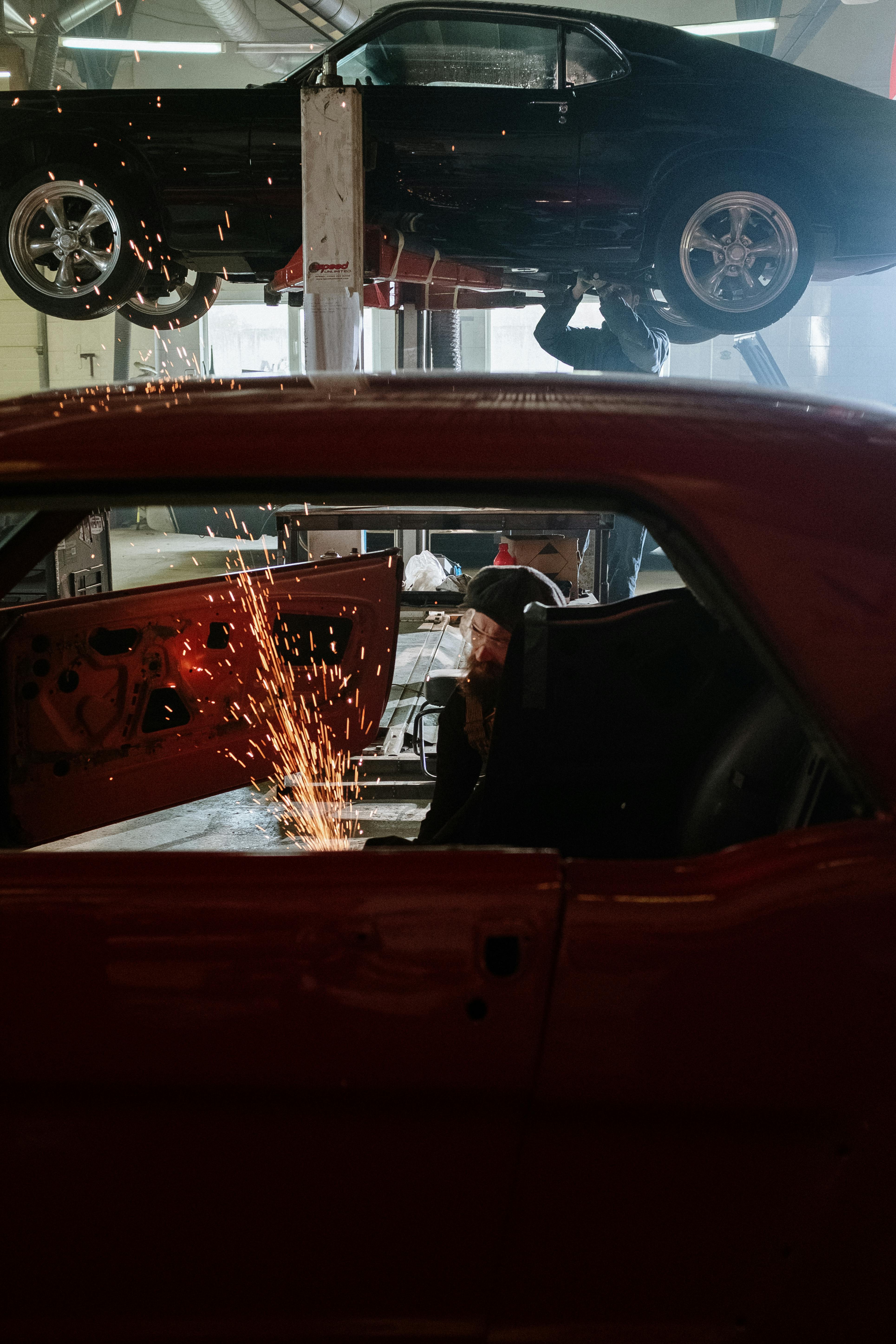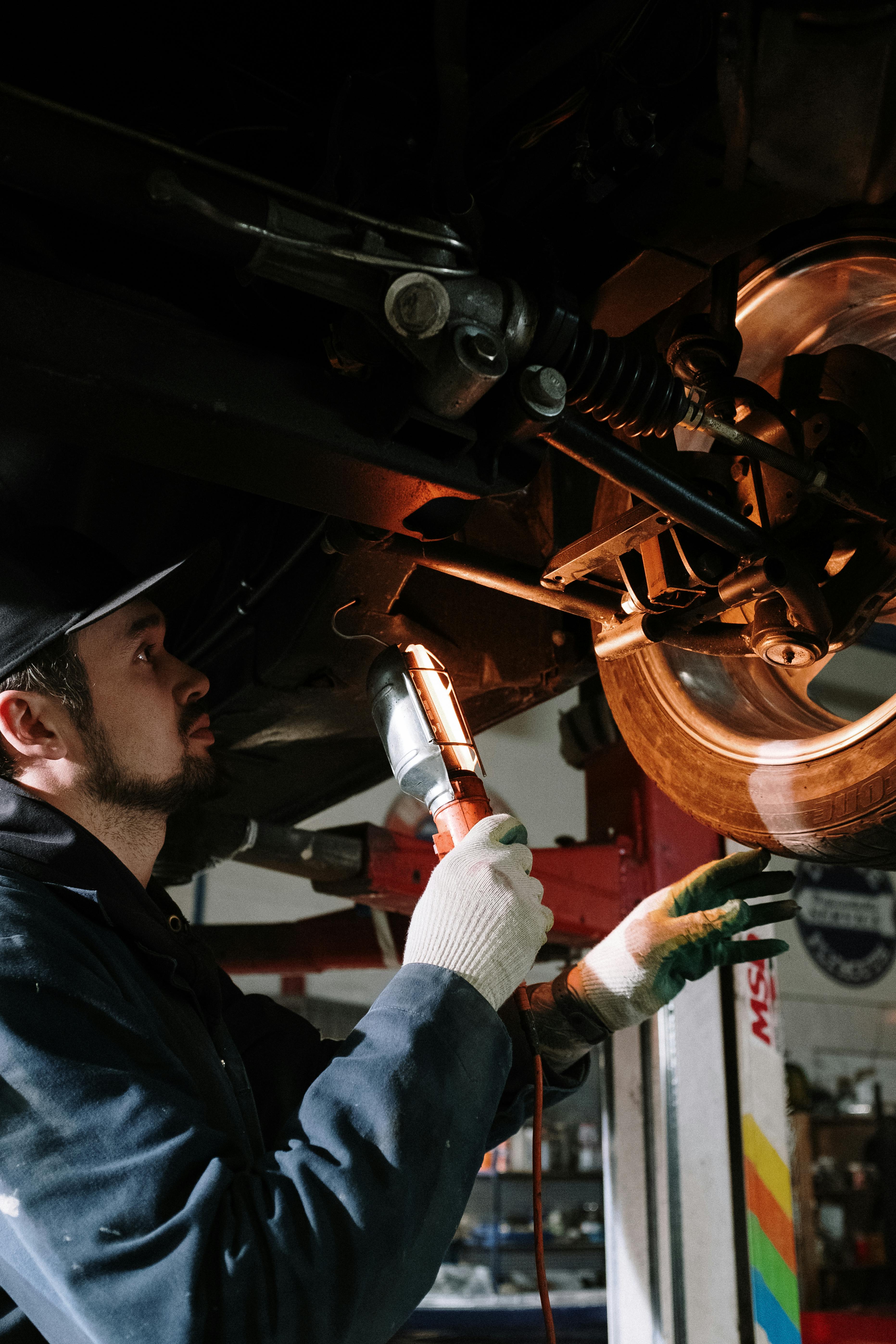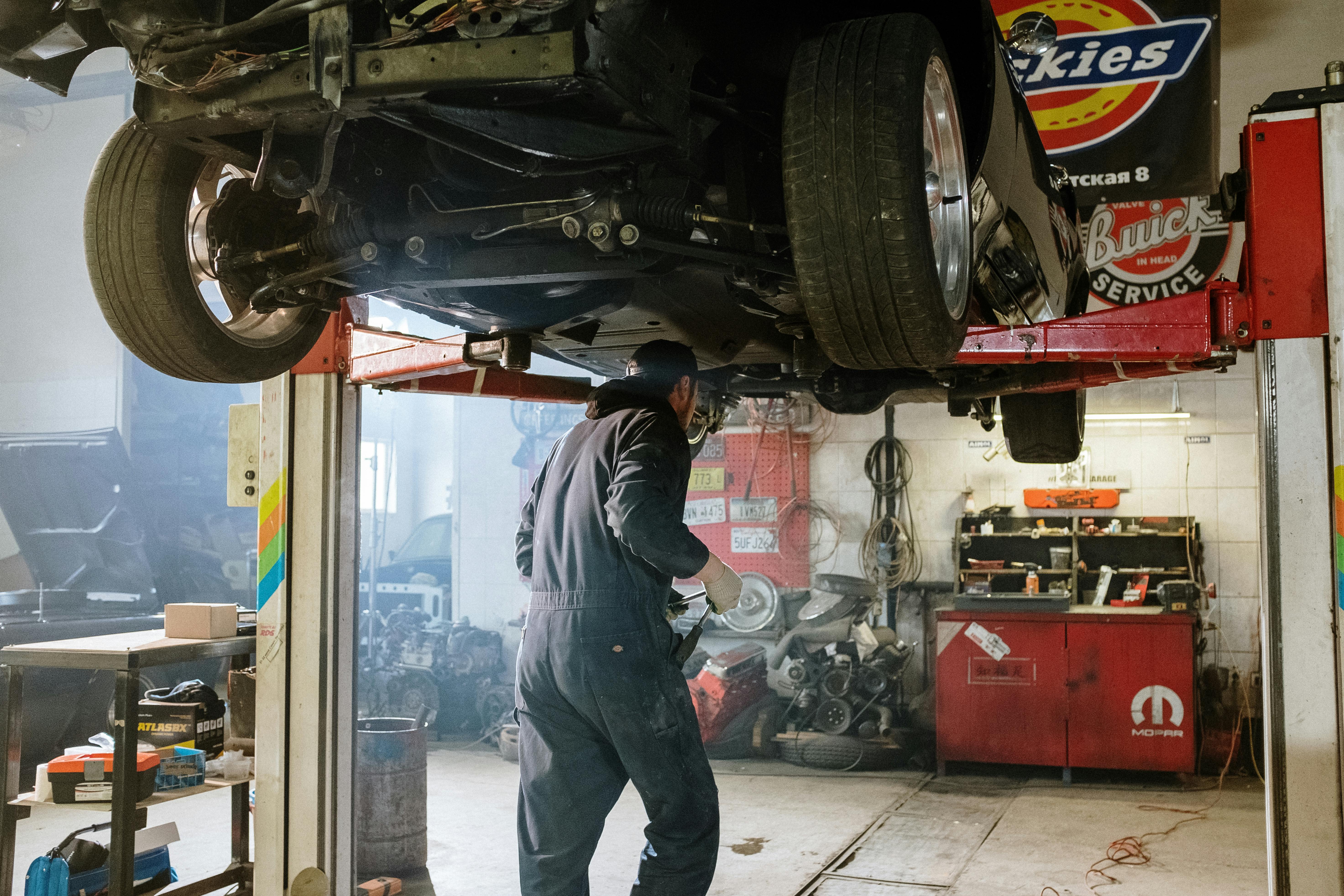Commercial Vehicle Insurance for Business Fleets – How Companies Reduce Legal Liability and Optimize Fleet Risk Contracts
Commercial Vehicle Insurance for Business Fleets – How Companies Reduce Legal Liability and Optimize Fleet Risk Contracts
In personal auto insurance, coverage is primarily designed to protect individual drivers for everyday use. But commercial vehicle insurance operates under a completely different legal and financial structure. When a vehicle is tied to business operations — whether it's a small delivery van, a contractor’s service truck, or an entire transportation fleet — liability shifts from personal fault to corporate risk exposure.
For businesses, a single accident involving a company vehicle isn’t just a collision — it’s a potential legal claim, brand reputation event, and financial liability crisis. Insurance companies know this, which is why commercial fleet policies include legal risk clauses, third-party injury provisions, business interruption coverage and in some cases, even attorney escalation protocols built into the policy wording.
Commercial vehicle insurance is not just about replacing a damaged vehicle — it’s about shielding the company from lawsuits, payroll disruption, and regulatory penalties.

This is why attorneys often advise businesses — especially logistics, delivery startups, field service teams, and contractor firms — to treat commercial insurance as a legal defense mechanism rather than a basic financial policy. In fact, in certain high-risk categories like SR-22 Commercial Liability Insurance (often required after a legal violation or compliance penalty), coverage becomes legally mandatory rather than optional — a topic we will cover in our upcoming guide: SR-22 High Risk Business Auto Insurance – When Fleet Coverage Becomes a Legal Obligation.
PART 2 — Why Commercial Insurance Matters: The Legal & Financial Consequences of Operating Without Proper Fleet Coverage
When a business vehicle is involved in an accident, the legal responsibility extends beyond the driver. Under commercial liability law, the company itself becomes a party to any legal claim, which means:
- ⚠️ The company can be sued for negligent supervision, poor maintenance, or reckless fleet operations.
- ⚠️ Plaintiffs can demand compensation not just for vehicle damage — but for medical costs, downtime, emotional damages, and loss of income.
- ⚠️ Without proper coverage, the business may face asset seizure, wage garnishment, or forced interruption of services to satisfy legal judgments.
- ⚠️ Legal cases can escalate into federal-level commercial liability disputes if injuries, employee rights, or logistics contracts are involved.
Companies that operate delivery fleets or contractor trucks without proper fleet insurance are not just uninsured — they are legally exposed. A simple rear-end collision that would be a minor inconvenience for a personal car can escalate into a **$250,000 commercial liability lawsuit** when it involves a business vehicle.
In some states, operating a business vehicle without commercial coverage is considered a compliance violation that triggers mandatory SR-22 filings — a legal designation that categorizes the business as a “high risk operator” in the eyes of insurance carriers and the Department of Motor Vehicles. This automatically increases premium rates and may restrict coverage options for years.
Note: We cover high-risk fleet status and legal compliance filings in detail in our supplemental legal guide: SR-22 High–Risk Coverage – Legal Insurance Requirements for Commercial Operators.

Commercial insurance isn’t about avoiding fines — it’s about surviving corporate liability in a legal environment where plaintiffs target businesses, not drivers.
PART 3 — Types of Commercial Vehicle Insurance Coverage and How Contract Language Affects Legal Liability
Commercial insurance for business fleets is not a single policy type — it is a structured package that includes multiple coverage layers, each designed to handle a different type of legal or financial exposure. Understanding these coverage layers is essential, especially when negotiating fleet contracts or preparing for legal compliance audits.
🔹 The Core Commercial Coverage Types Businesses Must Understand
- Auto Liability Coverage — Covers injury and property damage claims made by third parties. Without it, plaintiffs can sue the company directly under commercial negligence law.
- Physical Damage Coverage (Collision & Comprehensive) — Protects business vehicles regardless of fault. Many small fleet owners mistakenly assume personal auto policies apply — they don’t.
- Cargo or Payload Insurance — Required for logistics, delivery services, courier platforms, and contractors transporting goods. Loss of cargo is considered a “commercial contract breach,” not just an insurance event.
- Uninsured Motorist Commercial Protection — If another driver causes damage but is uninsured, the business fleet policy absorbs the cost — not the company’s internal financial reserves.
- Legal Fee Coverage & Attorney Coordination Clause — Advanced policies include “legal coordinator” services to assign a defense attorney automatically if an injury claim escalates.
Note: If a fleet vehicle hits a pedestrian or cyclist, the case often transitions into a Personal Injury Law Framework — where payouts are significantly higher, and corporate legal response must be immediate.

In advanced risk environments, some businesses are also advised to combine fleet insurance with Cyber Insurance for Fleet Telematics & GPS Freight Systems — especially when dealing with connected vehicle dashboards, digital routing platforms, or IoT-powered logistics data.
PART 4 — Fleet Liability and Lawsuits: How Accident Scenarios Escalate into Corporate Legal Claims
When a business-owned vehicle is involved in an accident, insurance is just the first layer of response — the real battle is legal positioning. In high-value accidents, claimants don’t just seek insurance payouts — they look for legal fault, corporate negligence, and systemic liability.
Common Lawsuit Paths in Commercial Fleet Incidents
- ⚖️ Negligent Hiring or Driver Supervision — Plaintiffs may argue the company failed to ensure the driver met safety standards.
- ⚖️ Forced Labor Time & Fatigue Claims — If the company overworked employees or manipulated fleet scheduling, lawsuits may connect with Wage Theft & Overtime Class Action Law.
- ⚖️ Maintenance Negligence Lawsuits — Repair delays or ignored maintenance logs can trigger high-risk liability exposure far beyond simple insurance claims.
- ⚖️ Personal Injury Litigation Escalation — If serious injury occurs, plaintiffs shift from insurance claim to Personal Injury Legal Action, increasing settlement value exponentially.
- ⚖️ Regulatory Violation Penalties — For trucks, vans, and cargo vehicles, agencies like FMCSA and DOT can impose fines — insurance does not cover regulatory penalties.
This escalation pattern is why smart fleet managers treat insurance as a legal shield strategy, not just a cost line in accounting. Attorneys advising fleet-based companies often use the phrase: “Fleet liability is not a financial problem — it’s a legal timeline problem.”

In upcoming sections, we’ll break down how businesses can restructure their fleet policies to reduce legal exposure before any lawsuit is filed.
PART 5 — How Businesses Use Commercial Insurance to Reduce Legal Settlement Costs and Control Liability Exposure
For many business owners, insurance is viewed as a passive requirement — a document filed away in accounting records after purchase. But the most successful fleet operators and logistics companies treat insurance as a proactive legal defense tool. Rather than simply “having coverage,” they strategically engineer their insurance contracts to reduce lawsuit payouts before legal action begins.
How Insurance Can Be Structurally Optimized to Minimize Lawsuit Exposure
- 📌 Negotiating Extended Liability Clauses — Advanced fleet insurance allows legal advisors to assist in “early settlement positioning,” reducing the risk of full litigation.
- 📌 Pre-Negotiated Legal Counsel Integration — Some premium policies assign a dedicated attorney who steps in automatically in case of injury claims — an approach similar to Severance Attorney Integration Clauses in executive contracts.
- 📌 Adding Reputation Damage & Media Crisis Coverage — Companies with public visibility now include clauses that fund PR damage control alongside legal defense — a concept borrowed from Equity Dispute Legal Shields.
- 📌 Building “Legal Buffer Zones” in Contracts — Attorneys create contract language that limits plaintiff access to internal company data, reducing case strength before depositions even begin.
In essence, insurance can do more than pay claims — it can weaken legal momentum against your business from day one.
“Lawsuits are not won in court — they are prevented through contract architecture long before any incident occurs.”

PART 6 — Telematics, AI Tracking, and Cyber Insurance Integration: The Future of Fleet Risk Management
Modern fleet management is no longer just about vehicles and drivers — it now involves data streams, GPS tracking, digital route optimization, and AI-driven telematics surveillance. As soon as data becomes a core operational element, insurance shifts from physical liability to cyber risk liability.
This is where Cyber Insurance intersects with Commercial Vehicle Insurance. Fleet data, driver biometrics, GPS patterns, fuel optimization AI, and delivery timestamp logs can all become legal evidence in accident disputes, harassment claims, or even overtime class action investigations.
Why Companies Are Now Combining Fleet Insurance with Cyber Insurance
- 🔐 Telematics Data Can Be Used Against the Company — Plaintiffs can subpoena GPS logs to prove fatigue, overworked drivers, or reckless dispatching decisions.
- 🧠 AI Risk Scoring Can Be Legally Challenged — If a company uses AI-based risk systems to assign deliveries unfairly, discrimination and bias claims may appear, pushing the case into EEOC Discrimination Law.
- ⚙️ Cyberattacks on Fleet Control Systems — A hacked fleet interface or unauthorized route manipulation can trigger Cyber Insurance Legal Claims — separate from standard vehicle insurance.
- 📡 GPS & Compliance Data Leaks — If driver or route data is breached, companies face both data privacy fines and commercial liability lawsuits — something only Cyber Insurance can cover.
Telematics → Legal Data → Cyber Insurance Layer This is the new flow of risk management inside logistics-heavy businesses. Companies that rely on digital dispatch platforms must now write insurance policies that reflect both physical risk (accidents) and data risk (telematics breach).

In the final section, we will break down how to finalize a commercial insurance strategy that integrates legal defense, cyber risk, and long-term liability control.
PART 7 — Final Strategic Framework: Building a Legally-Protected and Data-Optimized Fleet Insurance System
Commercial vehicle insurance is no longer a passive compliance requirement — it is a legal, financial, and cyber-risk control framework. Companies that approach insurance with a “check-the-box” mindset expose themselves to lawsuits, regulatory penalties, and operational disruptions when incidents occur.
✅ The Three-Pillar Insurance Strategy Used by Elite Fleet Operators
- ⚖️ Legal Defense Foundation – Ensure policies include attorney coordination clauses, high-limit liability coverage, and legal fee allocation before claim escalation.
- 📉 Financial Risk Shielding – Use policy architecture to reduce settlement payout risk, cover business interruption, and prevent personal asset exposure for owners/operators.
- 📡 Cyber & Data Integration Layer – Combine fleet insurance with Cyber Insurance Protection to defend against telematics breaches, AI data misuse lawsuits, and compliance failure fines.
By integrating these three layers, companies move from “insured” to “protected” — a major difference in a corporate legal environment where plaintiffs aggressively target businesses with high vehicle activity.
“Insurance pays claims. Legal insurance strategy prevents lawsuits.”
📚 Official Regulatory Authorities for Commercial Fleet Insurance Compliance
- FMCSA (Federal Motor Carrier Safety Administration) — U.S. commercial vehicle compliance and fleet insurance minimums.
- U.S. Department of Transportation (DOT) — Commercial fleet risk regulations & safety audits.
- NAIC (National Association of Insurance Commissioners) — Commercial policy governance and state-level insurance enforcement.
- OSHA — Fleet safety, worker fatigue regulation, and driver labor protection standards.
To expand your insurance risk strategy, continue with our connected guides on SR-22 High Risk Commercial Insurance • Cyber Insurance for Fleets • Personal Injury Law for Fleet Accidents.
